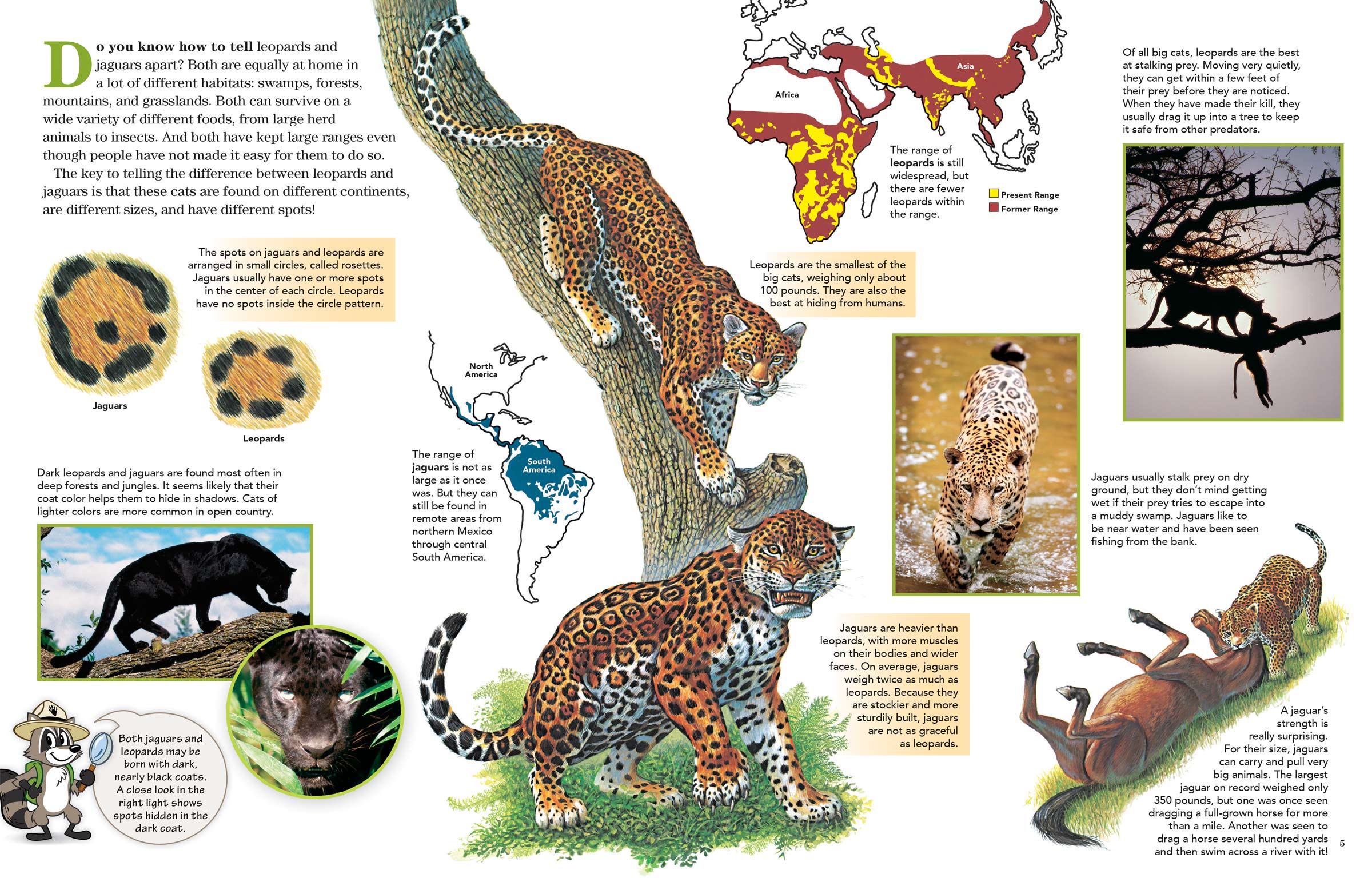
Leopards and Jaguars
ByDo you know how to tell leopards and jaguars apart? Both are equally at home in a lot of different habitats: swamps, forests, mountains, and grasslands. Both can survive on a wide variety of different foods, from large herd animals to insects. And both have kept large ranges even though people have not made it easy for them to do so.
The key to telling the difference between leopards and jaguars is that these cats are found on different continents, are different sizes, and have different spots!
The spots on jaguars and leopards are arranged in small circles, called rosettes. Jaguars usually have one or more spots in the center of each circle. Leopards have no spots inside the circle pattern.
Dark leopards and jaguars are found most often in deep forests and jungles. It seems likely that their coat color helps them to hide in shadows. Cats of lighter colors are more common in open country.
Both jaguars and leopards may be born with dark, nearly black coats. A close look in the right light shows spots hidden in the dark coat.
The range of jaguars is not as large as it once was. But they can still be found in remote areas from northern Mexico through central South America.
The range of leopards is still widespread, but there are fewer leopards within the range.
Leopards are the smallest of the big cats, weighing only about 100 pounds. They are also the best at hiding from humans.
Of all big cats, leopards are the best at stalking prey. Moving very quietly, they can get within a few feet of their prey before they are noticed. When they have made their kill, they usually drag it up into a tree to keep it safe from other predators.
Jaguars usually stalk prey on dry ground, but they don’t mind getting wet if their prey tries to escape into a muddy swamp. Jaguars like to be near water and have been seen fishing from the bank.
Jaguars are heavier than leopards, with more muscles on their bodies and wider faces. On average, jaguars weigh twice as much as leopards. Because they are stockier and more sturdily built, jaguars are not as graceful as leopards.
A jaguar’s strength is really surprising. For their size, jaguars can carry and pull very big animals. The largest jaguar on record weighed only 350 pounds, but one was once seen dragging a full-grown horse for more than a mile. Another was seen to drag a horse several hundred yards and then swim across a river with it!

